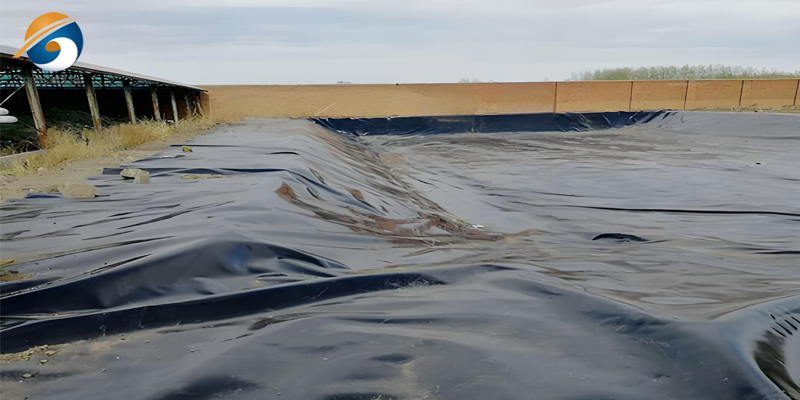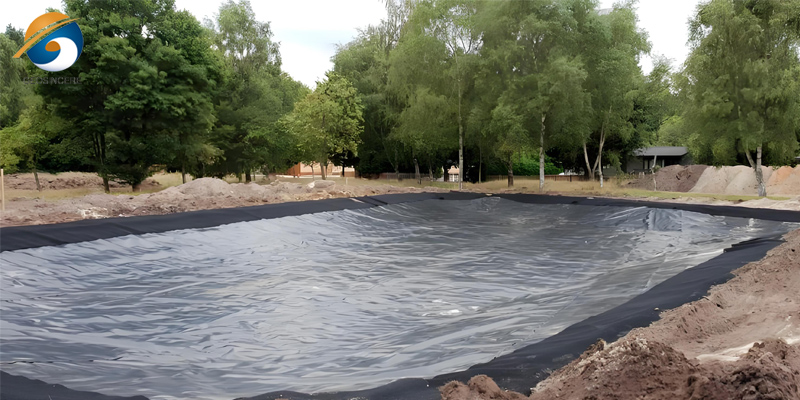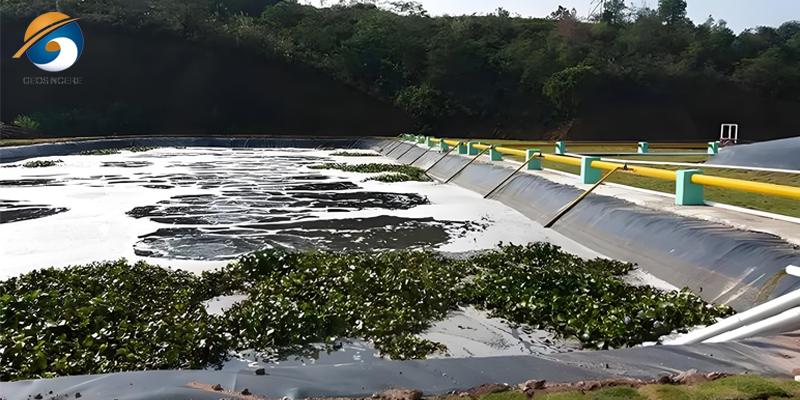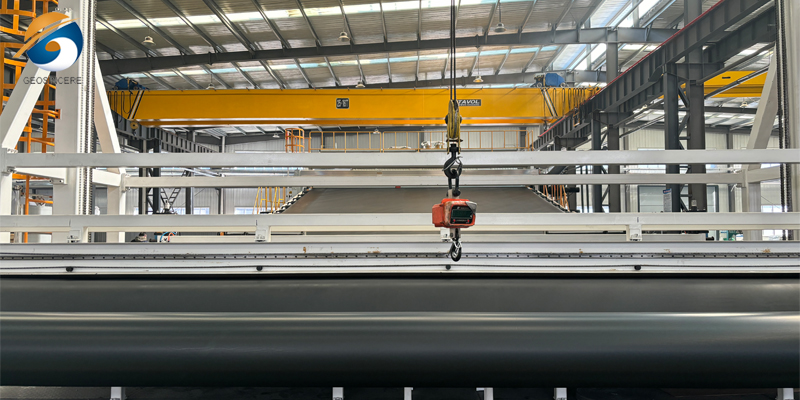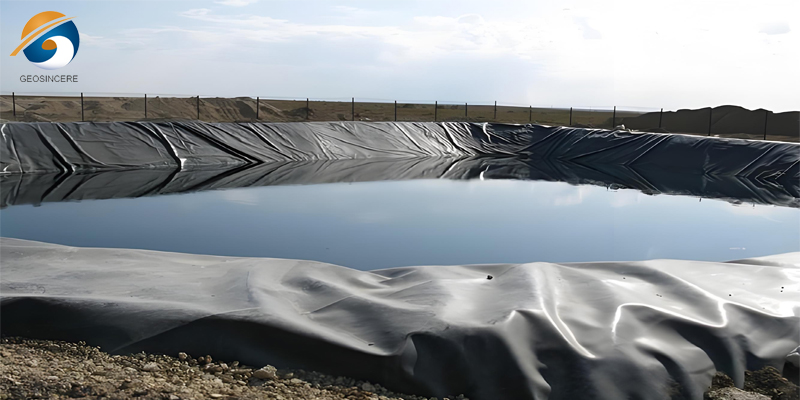What is the Best Material for HDPE Ditch Liner?
When it comes to fine drainage solutions, material desires play a crucial role in overall performance and lifespan. HDPE ditch liner is recognized for its durability, chemical resistance, and versatility. However, in the HDPE field, thickness, density, and component versions can widely affect the effectiveness of ditch liner in unique applications. This article explores the wonderful material of HDPE ditch liner, examining factors such as environmental conditions, installation requirements, and the expected use of the lining. By mastering these aspects, you can make wise choices, beautify the drainage effect, and achieve a certain degree of lasting performance.
1. What are HDPE Ditch Liner and What are Their Main Uses?
HDPE ditch liner or HDPE liner is a durable and flexible sheet made of high-density polyethylene plastic. They are mainly used to arrange ditches, channels, and different drainage structures to control water flow, prevent erosion, and reduce pollution.
The main uses of HDPE ditch liner:
- Erosion Control: HDPE liner successfully prevents soil erosion by stabilizing the soil and reducing runoff. They form a barrier to protect the banks of the ditch from the influence of water flow.
- Water resource management: These pads help guide and manage water flow in farmland, development sites, and roads. They ensure that water is effectively guided, reducing floods and waterlogging.
- Environmental Protection: HDPE ditch liner is used for environmental functions to prevent pollutants from runoff from entering groundwater or near water bodies. They form a powerful barrier that minimizes the migration of leachate and chemicals to the greatest extent possible.
- Agricultural Applications: HDPE liner is used in agriculture to manage irrigation systems, drainage ditches, and ponds. They help maintain the optimal moisture stage and beautify crop growth.
- Waste Management: They are also used in landfills and waste control structures to prevent leachate from contaminating surrounding soil and water sources.
- Construction: In the development project, HDPE ditch liner is used to control rainwater runoff and protect the construction site from erosion throughout and after the construction process.
2. What are the Advantages of Using HDPE Ditch Liner?
2.1 Durability: HDPE is recognized for its strength and tear resistance. This durability ensures that the lining of the ditch can withstand harsh environmental conditions, including harsh temperatures, UV radiation, and chemical exposure.
2.2 Chemical resistance: HDPE has a high tolerance to various chemicals, making it suitable for agricultural, industrial, and environmental
environments. It can effectively prevent infections from fertilizers, insecticides, and various harmful substances.
2.3 Flexibility and Lightweight: HDPE ditch lining is bendable, easy to handle, and simplifies the installation process. Their lightweight nature reduces transportation costs, making them less difficult to use on site.
2.4 Cost effectiveness: Although initial funding may vary, the long lifespan and low preservation requirements of HDPE lining typically result in price savings over time. They reduce the need for universal replacement and repair.
2.5 Environmental Protection: HDPE ditch lining helps protect nearby ecosystems by preventing soil erosion and controlling runoff. They also reduce the risk of pollutants infiltrating groundwater or surface water.
2.6 Easy to install: HDPE lining can be easily connected into multiple configurations, making it suitable for special site conditions.
2.7 Customizable: HDPE lining can be manufactured in various thicknesses and specifications, allowing for complete customization according to precise project requirements. This versatility ensures the most useful overall performance for various applications.
2.8 Long service life: With ideal settings and maintenance, HDPE ditch lining can be used for decades, making it a reliable long-term solution for drainage and erosion control.
2.9 Effective water resource management: HDPE lining helps to effectively control water sliding, reduce the risk of floods, and strengthen drainage in agricultural and urban environments.
3. How to Choose the Right HDPE Ditch Liner to Meet Specific Needs?
3.1 Determine application: Determine the most important use (such as erosion control, agricultural drainage) to choose the appropriate thickness and grade.
3.2 Evaluate environmental conditions : Consider climate, soil type, and susceptibility to UV radiation or chemicals, and select liners that can withstand these factors.
3.3 Choose the appropriate thickness : Thicker liners have higher durability and puncture resistance, making them an ideal choice for high flow or harsh conditions.
3.4 Check UV resistance : Ensure that the pad has UV stability under sunlight to prevent degradation.
3.5 Consider chemical resistance: Evaluate the pad's resistance to chemicals or fertilizers based on your precise needs.
3.6 Evaluate installation requirements : Review the complexity of the setup process to select the pad that suits your abilities.
3.7 Evaluate drainage needs : Ensure that the lining design can effectively control the predicted water flow.
3.8 Reference manufacturer specifications : Refer to the technical statistics table to understand the performance of multiple HDPE liners.
3.9 Search for certification : Check whether it meets the requirements of the enterprise to ensure quality.
3.10 Seeking expert advice : Consult experts or suppliers for tailored advice.
4. What Is the Installation Process for HDPE Ditch Liner?
4.1 Site Preparation:
- Clear the installation area of debris, vegetation, and any sharp objects that could damage the liner.
- Grade the soil to create a smooth, even surface for the liner.
4.2 Excavate the Ditch:
- Dig the ditch to the required dimensions, ensuring the bottom is level and the sides are sloped appropriately for drainage.
4.3 Install Geotextile Fabric (if needed):
- In some cases, a geotextile fabric may be laid down to enhance drainage and prevent soil from penetrating the liner. This fabric should be placed on the prepared surface.
4.4 Lay the HDPE Liner:
- Roll out the HDPE liner along the prepared ditch. Ensure that it fits snugly and covers the entire area without wrinkles or folds.
4.5 Secure the Edges:
- Anchor the edges of the liner using stakes, sandbags, or other methods to prevent movement during installation. Ensure that the liner extends beyond the ditch edges for proper coverage.
4.6 Overlap Seams (if applicable):
- If multiple sections of liner are used, overlap the seams by at least 12 inches and use appropriate adhesive or welding techniques to secure them. Follow manufacturer guidelines for best practices.
4.7 Backfill the Ditch:
- Carefully backfill the ditch with soil, taking care not to damage the liner. Use a light touch to avoid punctures. Ensure that the soil is compacted adequately to minimize settling.
4.8 Final Inspection:
- Inspect the installation for any visible damage or areas where the liner is not properly secured. Make any necessary adjustments.
4.9 Test the System:
- Once installed, test the drainage system by observing water flow to ensure proper functionality.
4.10 Maintain Regular Checks:
- Periodically inspect the liner and drainage system for signs of wear, erosion, or damage to ensure long-term effectiveness.
5. Summarize
HDPE ditch liner is a versatile and effective solution for various applications, offering significant environmental and economic benefits. Its durability, chemical resistance, and ease of installation make it an ideal choice for erosion control, water management, and waste containment. By selecting the right HDPE liner and following proper installation practices, users can ensure long-lasting performance and contribute to sustainable practices in their projects.

